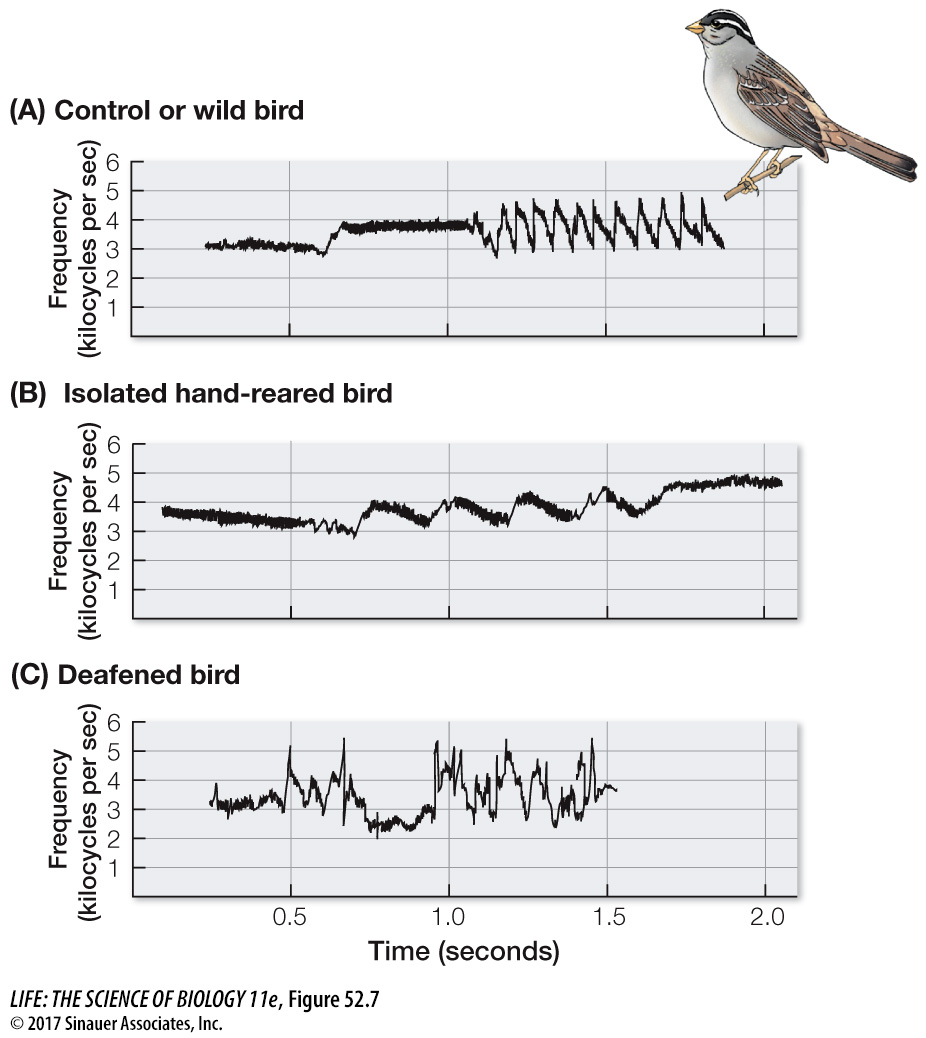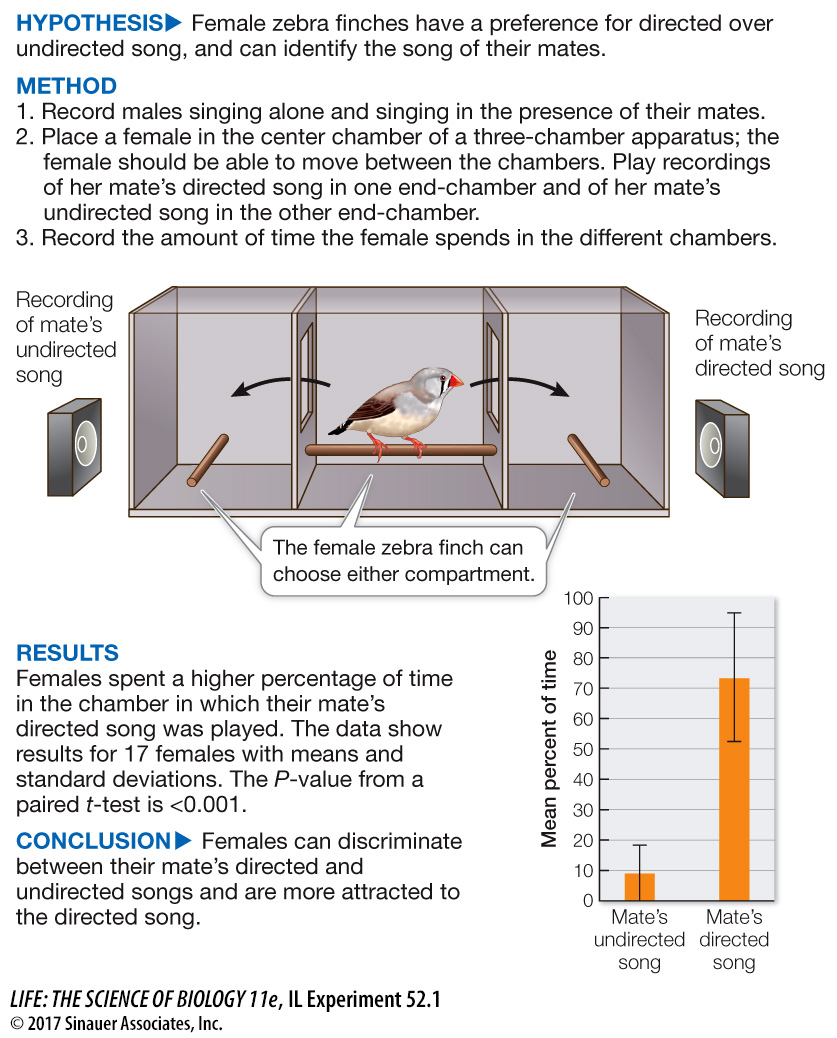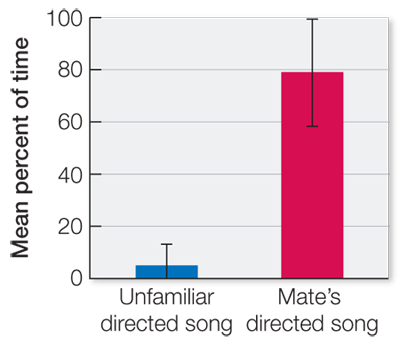Birdsong learning involves genetics, imprinting, development, and social interactions
The study of white-

Variation in birdsong is evident in nature. There are subtle differences between the songs of any two males, including those in neighboring territories. Regionally, white-
To investigate questions about the adaptive significance of variations in the male singing behavior, it is necessary to take female choice into consideration. Sarah Woolley and Allison Doupe at the University of California, San Francisco did that with zebra finches (Taeniopygia guttata), a species that has become a valuable model system for studying the neurobiology of birdsong. When male zebra finches sing in isolation, their song is variable (“undirected”), almost as if they are improvising and trying out new motifs. In the presence of females, however, they sing “directed” song (directed to a female) that is less variable. Woolley and Doupe conducted experiments to see which songs female zebra finches preferred (Investigating Life: Practice Makes Perfect). The females preferred directed song, and if mated, they preferred the directed song of their mate. Thus the ability to incorporate variations into the species-
investigating life
Practice Makes Perfect
experiment
Original Paper: Woolley, S. C. and A. J. Doupe. 2008. Social context-
When male zebra finches (Taeniopygia guttata) sing alone, they improvise (undirected song), but when they sing in the presence of a female, they sing a stereotyped (directed) song. Woolley and Doupe asked whether the quality of the song influenced the behavior of the female.

Practice Makes Perfect
work with the data
Since the experiment showed that females could distinguish between the directed and undirected songs of their mates, the next question was whether they could distinguish between the directed song of their mates and the directed song of other males. A second experiment used the same protocol as did the first one, but the two songs that were played to each female were the directed song of her mate and the directed song of an unfamiliar male. The results are shown in the table.
| Percent time spent close to: | |
|---|---|
| Unfamiliar directed song | Mate’s directed song |
| 25 | 55 |
| 15 | 81 |
| 8 | 43 |
| 7 | 78 |
| 6 | 92 |
| 6 | 92 |
| 5 | 90 |
| 5 | 50 |
| 5 | 86 |
| 4 | 85 |
| 4 | 84 |
| 3 | 83 |
| 3 | 81 |
| 3 | 80 |
| 2 | 73 |
| 1 | 72 |
| 1 | 97 |
| 0 | 98 |
QUESTIONS
1.
If you hypothesized that the female’s preference for her mate’s directed song was a factor in pair bonding rather than just a mating stimulus, what data might you collect to test this hypothesis?
If the song provides information about mate recognition, the female should show a strong preference for her mate’s directed song over the directed song of other males.
2.
Plot the data as bar graphs. Show the means and standard deviations, and do a paired t-test to determine the significance level. Can females distinguish their mate’s directed song from the directed song of an unfamiliar male?

Standard deviations are 5.9 and 19.3. The P-value is <0.001. Yes, the females clearly demonstrate recognition of and attraction to their mate's directed song versus the directed song of an unfamiliar male.
3.
What do these results suggest about the mating system of the zebra finch?
These data suggest that the directed song provides information about individual identity and plays a role in pair bonding of the male and female.
4.
What hypotheses can you suggest about the function of undirected song?
Undirected song may be an opportunity for the male to experiment with and practice slight variations in his song, but it may also represent a lower level of motivation to perform.
A similar work with the data exercise may be assigned in LaunchPad.